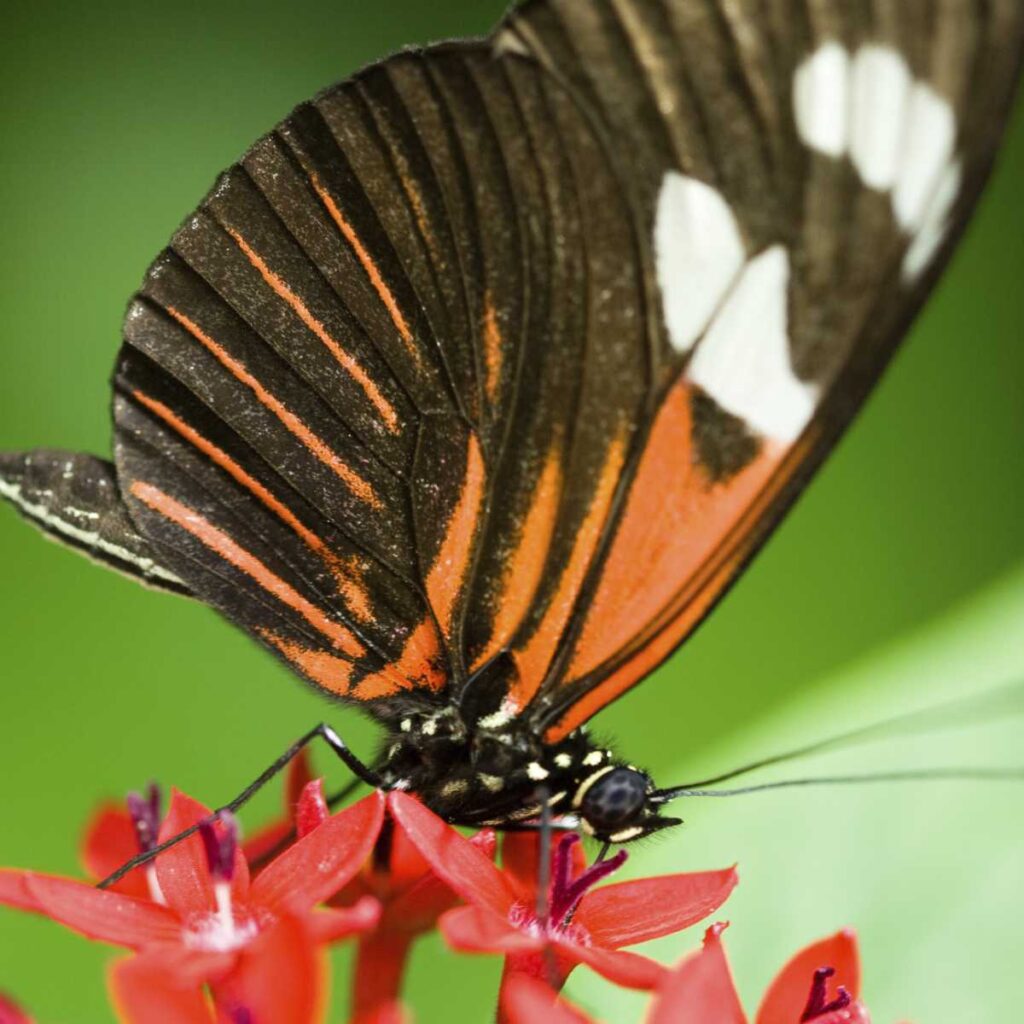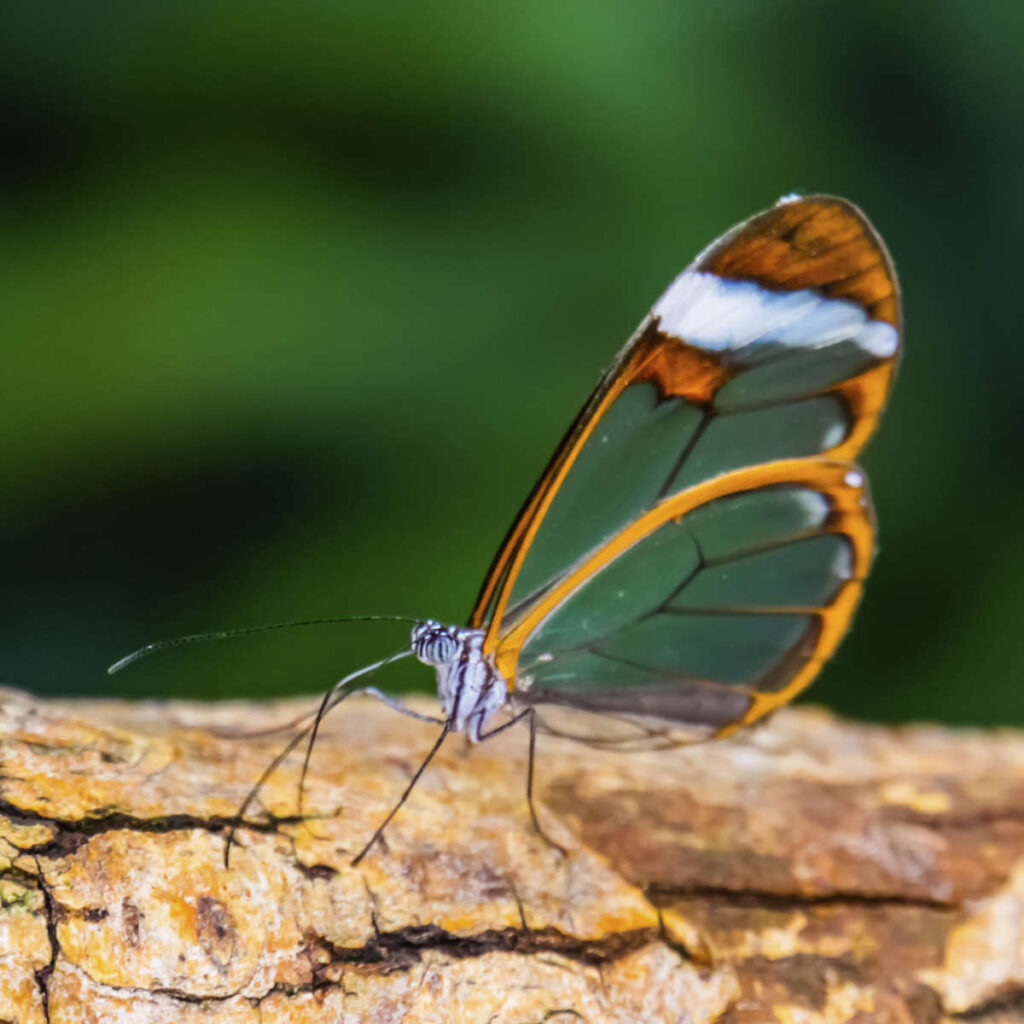Last Reviewed and Updated on January 20, 2023
Butterflies are one of the most colorful creatures on the planet. Did you know they taste with their feet? Or that some of them are poisonous? Explore these facts about butterflies and learn more about these fascinating insects.

1. There are over 18.000 species of butterflies
We are kicking off this list of facts about butterflies with their numbers. Butterflies can be found all over the globe, except Antarctica, and there are over 18.000 different species of them. So, so many colorful creatures.
2. They have been around for at least 56 million years
Their predecessors, the primitive moth-like insects, are a lot older and were fluttering around when dinosaurs roamed the Earth about 212 million years ago.
The fossils of these insects aren’t really common. Butterflies evolved from moths. The oldest known true butterfly is Protocoeliades kristenseni; the fossil was found in Denmark and is approximately 55 million years old.
3. Unlike moths, most butterflies are active by day
Most butterflies are only active by day, as opposed to moths, which are active by night. The hedylidae, also known as the American moth-butterflies, are the only group of butterflies that are active during the night.
4. Adult butterflies live from a week to almost a year, depending on the species
There is much variety when it comes to butterfly species, and the differences aren’t just visual. Once they enter the butterfly stage of their lives, they can live from just a couple of days to almost a year, depending on the species.
5. Most have a 4-stage life cycle
Almost all species of butterflies have a four-stage life cycle. Their life-cycle consists of an egg stage, a larva and caterpillar stage, the pupa stage, and an adult butterfly.

A small number of butterfly species do things a bit differently. They reproduce semi-parthenogenetically (asexually). When a female butterfly dies, a larva that is partially developed emerges from her.
6. Butterflies mostly feed on nectar
Nectar is the food of choice for butterflies most of the time. They are attracted to flowers both through the color of the flowers and their smell. Specific species of butterflies prefer specific plants.
But nectar is not all butterflies eat. Some also eat tears, sweat and even blood. But don’t worry, you don’t need to fear butterflies; they don’t actively search for blood and certainly can’t sting. They are in search of minerals they need and can get from many sources. If they happen to land on blood, they can get the minerals they need from it.
7. Some butterflies are poisonous
As if blood-eating butterflies weren’t enough, right? But don’t worry, unless you are contemplating eating a large number of butterflies, you have nothing to worry about. Some species of butterflies, such as Monarchs, feed on poisonous plants when they are in the caterpillar stage, which makes them poisonous both as caterpillars and adult butterflies if they are ingested.
They pose a danger to birds and some other insect-eating animals, and they learn to avoid them.
8. Adult butterflies do not defecate (poop)
Everything they eat (well, drink) is used up for energy. Caterpillars do, though, and do so almost continuously.
9. Dead leaf butterfly looks like a dead leaf
With so many different butterfly species, there are bound to be a few quirky ones. The dead leaf butterfly looks exactly as the name suggests, like a dead leaf.

10. Inside the chrysalis, a caterpillar liquifies itself before becoming a butterfly
The life cycle of a butterfly has a weird twist. Once the caterpillar is in the chrysalis it digests itself before becoming a butterfly.
Liked this fact? Do read our list of weirdest facts about animals.
11. Butterflies taste with their feet
One of the quirkiest facts about butterflies is they taste with their feet. Their taste sensors are located on their little feet.
12. Monarch butterflies travel the furthest of all insects
The subspecies of monarch butterfly, the Danaus plexippus plexippus, migrates each summer and fall to and from the West coast of California or Central Mexico.
13. Butterfly wings are clear but covered with tons of tiny colored scales
Butterflies have two pairs of wings that are usually completely covered by small scales.
Some species, such as Greta oto (glasswing butterfly), only have these scales on the edges of the wings. The inside of the wing is covered with a different type of scales and not the colored one and the wing is transparent.

14. Queen Alexandra’s birdwing is the biggest butterfly, and the Western pygmy blue is one of the smallest
Queen Alexandra’s birdwing is the biggest butterfly in the world. The female of the species can reach an impressive wingspan of up to q1 inches / 28 cm.
On the other side of the scale is the Western pygmy blue, although a few species compete for the spot. This butterfly has a wingspan of only 0.5 inches / 1.3 cm.
15. They can’t fly in the cold
Last on our list of facts about butterflies is their inability to fly if the temperatures are too low. Butterflies are physically unable to fly in the cold. They have no means of regulating their own body temperatures, so if the environmental temperatures are too low, their body temperature is low, and they won’t be able to fly.
